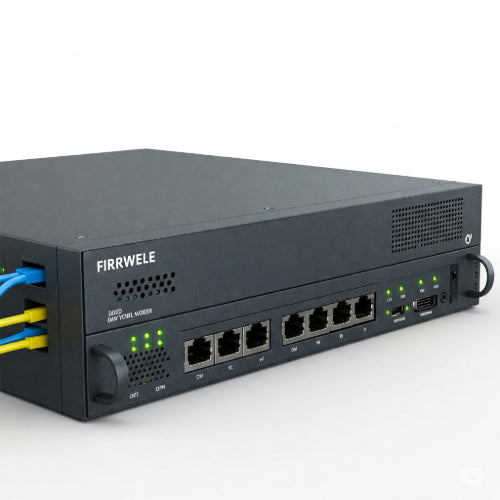The Unseen Guardians Evolve: Peering into the Future of Firewalls
In the ever-escalating battle against cyber threats, the firewall stands as a foundational security pillar. But in a landscape defined by increasingly sophisticated attacks, cloud migration, and the proliferation of connected devices, the traditional firewall is no longer enough. So, what does the future hold for these unseen guardians of our digital lives? Let's delve into the key trends shaping the evolution of firewalls in cybersecurity.
1. The Rise of Cloud-Native Firewalls:
The mass migration to cloud infrastructure has necessitated a shift in how we approach firewalling. Traditional hardware-based firewalls are ill-suited for the dynamic and distributed nature of the cloud. The future belongs to cloud-native firewalls, designed specifically to protect cloud workloads, applications, and data.
- Key Characteristics: These firewalls are often software-defined, scalable on-demand, and tightly integrated with cloud platforms like AWS, Azure, and GCP. They offer granular control over traffic within the cloud environment and often incorporate features like micro-segmentation to isolate workloads.
- Why it Matters: As businesses increasingly rely on the cloud, cloud-native firewalls will become essential for maintaining security and compliance in these complex environments.
2. AI and Machine Learning Integration:
The sheer volume and complexity of modern cyber threats are overwhelming traditional rule-based firewalls. The future of firewalls lies in the intelligent application of Artificial Intelligence (AI) and Machine Learning (ML).
- Enhanced Threat Detection: AI/ML algorithms can analyze vast amounts of network traffic data in real-time to identify anomalous patterns and indicators of sophisticated attacks that might bypass traditional signature-based detection. This includes zero-day exploits and insider threats.
- Predictive Security: By learning from past attacks and identifying emerging trends, AI-powered firewalls can proactively anticipate and block potential threats before they even materialize.
- Automated Response: AI can also automate responses to security incidents, isolating compromised systems and mitigating damage more quickly and efficiently than manual intervention.
- Behavioral Analysis: Instead of just looking at known malicious signatures, AI can establish baselines of normal network behavior and flag deviations that could indicate an attack.
3. Micro-segmentation: Granular Control is King:
The traditional perimeter-based security model, where the firewall acts as a gatekeeper to the entire network, is becoming increasingly ineffective in the face of internal breaches and lateral movement of attackers. Micro-segmentation is emerging as a crucial strategy, and future firewalls will play a key role in its implementation.
- How it Works: Micro-segmentation involves dividing the network into smaller, isolated segments and applying granular security policies to each segment. This limits the blast radius of a security incident and makes it harder for attackers to move laterally within the network.
- Firewalls as Enforcers: Next-generation firewalls (NGFWs) and cloud-native firewalls are evolving to provide the fine-grained control necessary to implement and enforce micro-segmentation policies effectively.
4. Integration and Automation: The Power of Orchestration:
In today's complex security landscape, isolated security tools are less effective. The future of firewalls will see tighter integration with other security solutions and a greater emphasis on automation.
- Security Orchestration, Automation and Response (SOAR): Firewalls will increasingly integrate with SOAR platforms to automate incident response workflows, share threat intelligence, and streamline security operations.
- Threat Intelligence Platforms (TIPs): Integration with TIPs will allow firewalls to leverage a broader range of threat intelligence feeds for more accurate and proactive threat detection and prevention.
- Identity and Access Management (IAM): Tighter integration with IAM systems will enable more context-aware security policies based on user identity and roles.
5. The Convergence of Security Functions:
We are already seeing a trend towards the convergence of various security functions into a unified platform. Secure Access Service Edge (SASE) is a prime example, combining network security functions like firewalls, secure web gateways, and zero-trust network access into a cloud-delivered service.
- Simplified Management: Convergence simplifies security management and reduces the complexity of managing disparate security tools.
- Consistent Security Policies: SASE and similar converged platforms enable consistent security policies to be applied across the entire network, regardless of user location or device.
6. Focus on Visibility and Analytics:
Effective security requires comprehensive visibility into network traffic and security events. Future firewalls will offer more advanced analytics and reporting capabilities.
- Real-time Monitoring and Dashboards: Providing security teams with clear and actionable insights into network activity and potential threats.
- Advanced Logging and Forensics: Enabling more thorough investigation of security incidents.
- Integration with Security Information and Event Management (SIEM) systems: Providing a centralized platform for analyzing security data from various sources, including firewalls.
Challenges and Considerations:
While the future of firewalls is promising, there are challenges to overcome:
- Complexity: Implementing and managing advanced firewall features like AI/ML and micro-segmentation can be complex.
- Evolving Threat Landscape: Attackers are constantly developing new techniques, requiring continuous innovation in firewall technology.
- Talent Gap: A shortage of cybersecurity professionals with the skills to manage and leverage these advanced firewall capabilities remains a concern.
Conclusion:
The firewall is far from becoming obsolete. Instead, it is undergoing a significant transformation to meet the evolving demands of the modern threat landscape. The future of firewalls is intelligent, cloud-native, integrated, and focused on granular control and comprehensive visibility. As businesses navigate an increasingly complex digital world, these advanced firewall technologies will be essential for building resilient and secure infrastructure. The unseen guardians are evolving, and their future is brighter – and more critical – than ever before.







